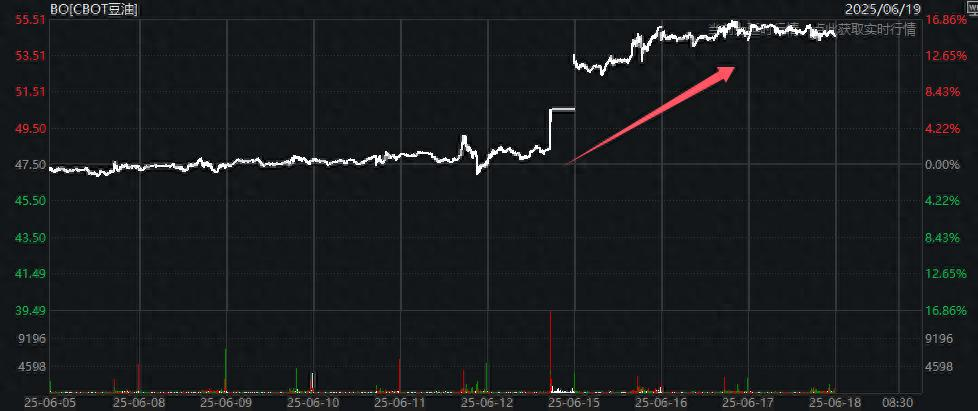Datetime: 2025-07-08 14:23:28 Visit: 7539
Market data shows that palm oil and soybean oil prices have risen sharply recently because the conflict between Israel and Iran has pushed up energy costs and triggered demand for oil substitutes, and the US Environmental Protection Agency has recently proposed to increase the blending ratio of biofuels in diesel and gasoline.
Since last week, US soybean oil futures have risen 11% to above 55 cents per pound, the highest level since October 2023.

Malaysian palm oil prices continued to fall earlier this year due to oversupply, but have also risen more than 6% this week to nearly 4,100 ringgit per ton.
The surge in demand for these edible oils is partly due to the pursuit of cheaper energy, mainly because Brent crude oil prices have risen by about 8% since Israel launched air strikes on Tehran's nuclear program and military facilities last week.
Darren Lim, a commodity strategist at Singapore-based brokerage Phillip Nova, said, "The main reason for this rise is energy prices - especially crude oil prices, because of this geopolitical conflict," he added that edible oil prices are following the trend of crude oil prices.
"Higher energy prices have pushed up the cost of palm oil production, while also boosting potential demand for biofuels as they can be used as an alternative energy source," Lim said.
U.S. soybean oil stocks fell to 1.37 billion pounds at the end of May, down 20% from a year earlier and the lowest level for May since 2004, according to the National Oilseed Processors Association.
Meanwhile, speculators cut their net long positions in soybean oil futures in the week before the EPA announcement, according to data from the U.S. Commodity Futures Trading Commission (CFTC). But speculators covered their positions after the EPA announcement proved more favorable to the U.S. industry than expected, which may have driven the rally, Hart said.
Palm oil, the cheapest major edible oil, is often closely linked to soybean oil prices, especially in major import markets such as India, where consumers often switch between the two based on price. Indian consumers have also recently increased their palm oil purchases due to a reduction in import taxes, Lim noted.

